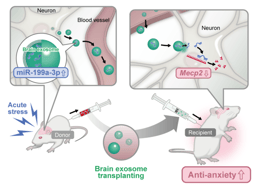Carbenoid-involved Reactions Integrated with Scaffold-based Screening Generates a Nav1.7 inhibitor
Published in Chemistry
Recently, Hu Wenhao's team from the School of Pharmaceutical Science of Sun Yat-Sen University, in collaboration with Cai Song's team from the School of Pharmacy of Shenzhen University, successfully constructed an oxindole-based REAL (OREAL) library based on the reaction methodology of carbene intermediate capture, using isatin as the starting material. The OREAL library was applied to the screening of Nav1.7 inhibitors, and compound C4 with Nav1.7 selective inhibition was screened, providing an example for the construction of a synthetic accessible virtual compound library and its application.
This study consists of two consecutive works, namely the construction of OREAL and the screening of Nav1.7 inhibitors based on OREAL. Firstly, the team members collected the CIR reaction developed by the research group over the past 10 years using istain as the starting material, and used this reaction to construct a compound library, resulting in a total of 30 million virtual compound molecules containing 1278 unique skeleton structures. Through comparative analysis with other commercial compound libraries and activity databases containing Nav1.7 inhibitors, it was found that the OREAL library is closely related to other databases in terms of molecular properties and covers a wider chemical space in terms of structural diversity. Subsequently, the team conducted virtual screening based on the OREAL compound library and obtained 42 virtual molecules through two rounds of virtual screening. 42 virtual molecules underwent phenotype testing after synthesis, resulting in two precursor compounds. The team members subsequently conducted biological activity tests on the most active C4 and found that C4 has selective inhibitory activity on Nav1.7 ion channels and has anti pain effects in a neuropathic pain model of rodents. Research on the cardiotoxicity of C4 has shown that it only causes a slight change in hERG current and has no cardiotoxicity. Finally, team members conducted further research on the binding mode of C4 and Nav1.7 through molecular docking experiments.
This work demonstrates the application prospects of CIR reaction in the construction of accessible virtual compound libraries, and giving an example of OREAL application on drug screening. In the future, the research team will continue to expand the scale of compound libraries, explore broader chemical spaces, and apply other SAVI for drug screening, in order to find new structure virtual hit for various targets. The co-first authors of this study are Shu Jirong, a graduate student from the School of Pharmaceutical Science of Sun Yat-Sen University and Wang Yuwei, a graduate student from the Medical School of Basic Medical Science at Shenzhen University. The corresponding authors are Assistant Professor Cai Song from Shenzhen University, Dr. Shi Taoda, and Professor Hu Wenhao.



Please sign in or register for FREE
If you are a registered user on Research Communities by Springer Nature, please sign in